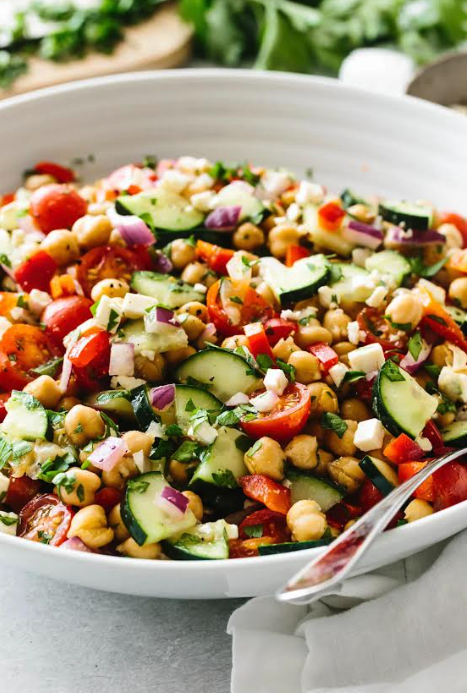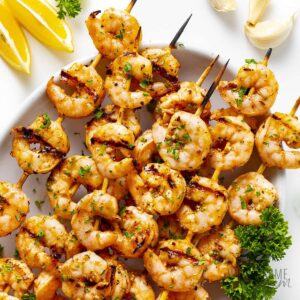Freshness With Homemade Healthy Dressings and Marinades
go.ncsu.edu/readext?1072714
en Español / em Português
El inglés es el idioma de control de esta página. En la medida en que haya algún conflicto entre la traducción al inglés y la traducción, el inglés prevalece.
Al hacer clic en el enlace de traducción se activa un servicio de traducción gratuito para convertir la página al español. Al igual que con cualquier traducción por Internet, la conversión no es sensible al contexto y puede que no traduzca el texto en su significado original. NC State Extension no garantiza la exactitud del texto traducido. Por favor, tenga en cuenta que algunas aplicaciones y/o servicios pueden no funcionar como se espera cuando se traducen.
Português
Inglês é o idioma de controle desta página. Na medida que haja algum conflito entre o texto original em Inglês e a tradução, o Inglês prevalece.
Ao clicar no link de tradução, um serviço gratuito de tradução será ativado para converter a página para o Português. Como em qualquer tradução pela internet, a conversão não é sensivel ao contexto e pode não ocorrer a tradução para o significado orginal. O serviço de Extensão da Carolina do Norte (NC State Extension) não garante a exatidão do texto traduzido. Por favor, observe que algumas funções ou serviços podem não funcionar como esperado após a tradução.
English
English is the controlling language of this page. To the extent there is any conflict between the English text and the translation, English controls.
Clicking on the translation link activates a free translation service to convert the page to Spanish. As with any Internet translation, the conversion is not context-sensitive and may not translate the text to its original meaning. NC State Extension does not guarantee the accuracy of the translated text. Please note that some applications and/or services may not function as expected when translated.
Collapse ▲My body is craving a bite of sunshine with fresh salads and more vegetables! If you’re feeling the same way, you’ll love these quick and easy homemade dressings that taste 1000x better than any store-bought versions (and without any funky ingredients). I’ll also share a few of my favorite ways to use each dressing—beyond just salads. These dressing are rich in good fats that our bodies need every day.
When it comes to dietary fat, what matters most is the type of fat you eat. Contrary to past dietary advice promoting low-fat diets, newer research shows that healthy fats are necessary and beneficial for health. For years, fat was marked as all BAD. We were urged to banish it from our diets whenever possible. We switched to low-fat foods. But the shift didn’t make us healthier, probably because we cut back on healthy fats as well as harmful ones.
You may still think that fat is bad for you, but nutrition science is always evolving and we now know our bodies need some fat from food. It’s a major source of energy. It helps you absorb some vitamins and minerals. Fat is needed to build cell membranes, the vital exterior of each cell, and the sheaths surrounding nerves. It is essential for blood clotting, muscle movement, and reducing inflammation. For long-term health, some fats are better than others. Good fats include monounsaturated and polyunsaturated fats. Bad ones include industrial-made trans fats. Saturated fats fall somewhere in the middle.
All fats have a similar chemical structure: a chain of carbon atoms bonded to hydrogen atoms. What makes one fat different from another is the length and shape of the carbon chain and the number of hydrogen atoms connected to the carbon atoms. Seemingly slight differences in structure translate into crucial differences in form and function.
So, selecting the right type of fat is an important part of a healthy diet. You must read the nutrition label on food to make the best choices. Choose foods with “good” unsaturated fats, limit foods high in saturated fat, and avoid “bad” trans-fat.
- “Good” unsaturated fats — Monounsaturated and polyunsaturated fats — lower disease risk. Foods high in good fats include vegetable oils (such as olive, canola, sunflower, soy, and corn), nuts, seeds, and fish. When you pour liquid cooking oil into a pan or use it in a recipe, there’s a good chance you’re using polyunsaturated fat. Polyunsaturated fats are essential fats. That means they’re required for normal body functions, but your body can’t make them. So, you must get them from food. Polyunsaturated fats are used to build cell membranes and the covering of nerves. They are needed for blood clotting, muscle movement, and inflammation. A polyunsaturated fat has two or more double bonds in its carbon chain. There are two main types of polyunsaturated fats: omega-3 fatty acids and omega-6 fatty acids. The numbers refer to the distance between the beginning of the carbon chain and the first double bond. Both types offer health benefits. Good sources of omega-3 fatty acids include fatty fish such as salmon, mackerel, and sardines, flaxseeds, walnuts, canola oil, and un-hydrogenated soybean oil. Foods rich in linoleic acid and other omega-6 fatty acids include vegetable oils such as safflower, soybean, sunflower, walnut, and corn oils. Eating polyunsaturated fats in place of saturated fats reduces harmful LDL cholesterol and improves the cholesterol profile. It also lowers triglycerides.
- Saturated fats, are a sometimes food. While not as harmful as trans fats, saturated fats are best consumed in moderation. Foods containing large amounts of saturated fat include red meat, chicken skin, butter, cheese, and ice cream. Some plant-based fats like coconut oil and palm oil are also rich in saturated fat.
- “Bad” fats — trans fats — increase disease risk, even when eaten in small quantities. Foods containing trans fats are primarily in processed foods made with trans-fat from partially hydrogenated oil. Fortunately, trans-fats have been eliminated from many foods. They are banned in the USA but, read nutrition labels to be sure you are not selecting or ingesting trans-fats.
Research revealed that people in Greece and other parts of the Mediterranean region enjoyed a low rate of heart disease despite a high-fat diet. The main fat in their diet, though, was not the saturated animal fat common in the USA with higher rates of heart disease. It was olive oil, which contains mainly monounsaturated fat. This finding produced a surge of interest in olive oil and the “Mediterranean diet,” a style of eating regarded as a healthful choice today.
According to the Mediterranean diet, the recommended daily oil intake is typically around 1 to 4 tablespoons of extra virgin olive oil. This translates to roughly 15-60 milliliters per day, with most experts suggesting at least 1 tablespoon as a good starting point. Olive oil is the primary fat source on the Mediterranean diet.
Always choose extra virgin olive oil for the highest quality and health benefits. Purchase EVOO in dark, small bottles within the used by date as once you open the bottle you will need to use it within 60 days to avoid rancid flavor. Utilize olive oil for cooking, drizzling on salads, marinades and as a dipping sauce.
Lemon Vinaigrette
This Lemon Vinaigrette is an absolute go to recipe in my kitchen! It’s fresh, bright, and zesty, and will brighten up any salad or plate of vegetables. Favorite ways to use it: I love using this in my Mediterranean chickpea salad or tuna, cucumber, and mozzarella salad.
- ⅓ cup Extra Virgin olive oil
- ¼ cup lemon juice, and a little fresh lemon zest
- 1 teaspoon Dijon mustard
- ½ teaspoon honey, or maple syrup
- 1 garlic clove, minced
- salt and pepper, to taste
- Add all the ingredients to a small bowl and whisk together until fully emulsified.
- Use immediately or refrigerate in an airtight storage container until ready to use up to one week.
- If you notice the oil separating, shake or stir it well before using.
- If the oil has hardened slightly after chilling, let the vinaigrette sit at room temperature for a few minutes to loosen it up.
Helpful Tips:
- Many vinaigrettes call for a 3:1 ratio of oil to acid. But, I prefer a 3:2 ratio, or something closer to that. It’s a little less oily and far more flavorful. But feel free to adjust to your preference.
- If you’d like it a bit thicker, add a smidge more Dijon mustard..
- Make it a creamy dressing: Whisk in a small spoonful of Greek yogurt (less is more to prevent curdling) or a large dollop of tahini to turn your lemon vinaigrette into a creamy dressing.
- If you’re not a fan of raw garlic: You can swap in finely diced shallot for a milder flavor.
Nutritional Information per Serving (2 Tbsp): Calories: 111, Carbohydrates: 1g, Fat: 12g, Saturated Fat: 2g, Polyunsaturated Fat: 1g, Monounsaturated Fat: 9g, Sodium: 10mg, Potassium: 14mg, Fiber: 0.1g, Sugar: 1g, Vitamin A: 1IU, Vitamin C: 4mg, Calcium: 2mg and Iron: 0.1mg.
Mediterranean Chickpea Salad
Serves 8

Mediterranean Chickpea Salad
- 2 (15-ounce cans) chickpeas drained and rinsed
- 1 large cucumber diced
- 1 red bell pepper diced
- 2 cups cherry tomatoes halved
- ¼ cup red onion diced
- 4 ounces feta cheese crumbled
- ¼ cup finely chopped parsley
- Lemon vinaigrette
Toss all of the ingredients into a large mixing bowl. Pour the lemon vinaigrette over the salad and give it a gentle stir until well combined.
Nutritional Information per serving with dressing: Calories: 300, Carbohydrates: 34g, Protein: 12g, Fat: 14g, Saturated Fat: 4g, Cholesterol: 13mg, Sodium: 172mg, Potassium: 499mg, Fiber: 9g, Sugar: 8g, Vitamin A: 921IU, Vitamin C: 33mg, Calcium: 134mg and Iron: 4mg.
Greek Salad Dressing
Serves: 8
This homemade Greek salad dressing is as simple as can be and tastes better than anything you can buy in the store! Add this dressing to any salad with fresh leafy greens and veggies! Use it as a Grilling Marinade: For meaty grilling items like chicken kabobs or grilled shrimp, let the items soak in the marinade before grilling. For vegetables and fish, simply brush the marinade on top before grilling.

Grilled Shrimp with Greek Marinade
- ⅓ cup red wine vinegar
- 1 lemon, juiced
- 1 teaspoon Dijon Mustard
- 2 garlic cloves, minced
- ½ teaspoon dried oregano
- ¼ teaspoon kosher salt
- ¼ teaspoon black pepper
- ½ cup olive oil
Add the vinegar, lemon, mustard, garlic, oregano, salt, and pepper to a medium bowl. Whisk together.
Pour oil and whisk together. Slowly add the olive oil and whisk vigorously while pouring until the dressing is emulsified. This dressing will last for up to one week in the fridge.
Nutritional information per serving 2 Tbsp: Calories: 127, Carbohydrates: 2g, Protein: 0.2g, Fat: 14g. Saturated Fat: 2g, Polyunsaturated Fat: 1g, Monounsaturated Fat: 10g, Sodium: 81mg, Potassium: 29mg, Fiber: 0.5g, Sugar: 0.4g, Vitamin A: 6IU, Vitamin C: 7mg, Calcium: 8mg and Iron: 0.3mg.
Sources for this article NC Extension Food and Nutrition educational program. For more information about the Foods and Nutrition please contact Louise L. Hinsley, Extension Agent, Family Consumer Science at the Beaufort County Center of N.C. Cooperative Extension, 155 Airport Road, Washington, 252-946-0111.



